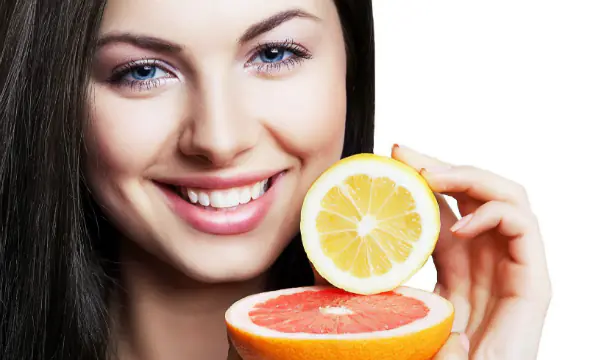A lack of vitamins in the spring gives women a lot of problems: hair falls out and loses its shine, nails peel, skin peels. Against the background of vitamin deficiency, spring depression may develop. Our task is to prevent the blues from taking over our body and mood. Let's welcome spring healthy and cheerful!
March and April are the most vitamin deficient months of the year. To compensate for vitamin deficiencies, eat foods of all colors of the spectrum.
Color therapy
Red. Sweet peppers are a source of vitamins C and carotene.
Orange. Oranges also contain a lot of vitamin C.
Yellow. Pumpkin will compensate for the lack of vitamins C, B and PP.
Green. Greens and green vegetables are high in folic acid and vitamin K.
Light blue, blue, purple. A variety of berries, even if frozen, should be eaten a handful a day - they contain a whole vitamin and mineral complex.
Grandma's recipes
Traditional methods of treating spring vitamin deficiency contain, for example, a recommendation to add a little honey to some juices, for example, carrot or pumpkin.
The richest source of vitamins is sprouted grains of wheat, peas, and beans. In their sprouts, the vitamin content increases several times.
An excellent folk remedy for preventing and combating vitamin deficiency is rosehip decoction. It’s easy to prepare this infusion: put dry, well-washed rose hips in a thermos and pour boiling water at the rate of a few berries per glass of water. After a couple of hours, you can drink the broth, but it is better to prepare it overnight.
Viburnum is very good for vitamin deficiency. To prepare an infusion from the fruits of the plant, take a tablespoon of berries, pour a glass of boiling water, leave for 4 hours, strain and drink. Take the infusion half a glass twice a day, for a week or two.
You can prepare a multivitamin mass according to a folk recipe. It is prepared from dried apricots, cranberries, lemon, raisins and walnuts. Take all the ingredients in equal quantities, chop and mix, then place the ingredients in a jar and fill with honey, based on 200 grams of honey per liter jar.
Top 5 mixtures to boost immunity
Lean on sauerkraut, it is a storehouse of vitamin C and other vitamins and minerals. It is advisable to consume it within 2-3 hours after it is removed from the brine. By eating 200 g of sauerkraut, you will replenish your daily vitamin C requirement.
Lemon
Lemon juice is very rich in organic potassium, which is so necessary for the normal functioning of the cardiovascular system and kidneys. Lemon juice is a source of citrine. This substance, combined with vitamin C, has a beneficial effect on redox processes in the body, metabolism, and also strengthens and makes the walls of blood vessels elastic.
Peas
Peas replenish the lack of vitamins in the spring. This is a very tasty and healthy product, it contains up to 6 g of protein, it can perfectly replace meat, and is also a low-calorie product and is often used in diets, while the body does not suffer from a lack of proteins. Peas are rich in B vitamins, vitamin A, C, and PP also contain manganese, iron, phosphorus, calcium, zinc, and potassium.
Dairy products
Kefir, cottage cheese and other fermented milk products can significantly support the body in spring. Those with weakened immune systems are recommended to drink kefir fermented with fermented baked milk or sour cream. You can also add cinnamon, dried apricots, honey and cardamom.
Nuts
Nuts are a real storehouse of everything a person needs. Walnut kernels are a rich source of vitamins and mineral salts. They contain a colossal amount of potassium, which is necessary for the growth and strengthening of the body. Manganese and phosphorus ensure normal functioning of the brain and heart, sulfur, copper, zinc, iodine, selenium and molybdenum activate the body’s immune forces, increase resistance to rads



